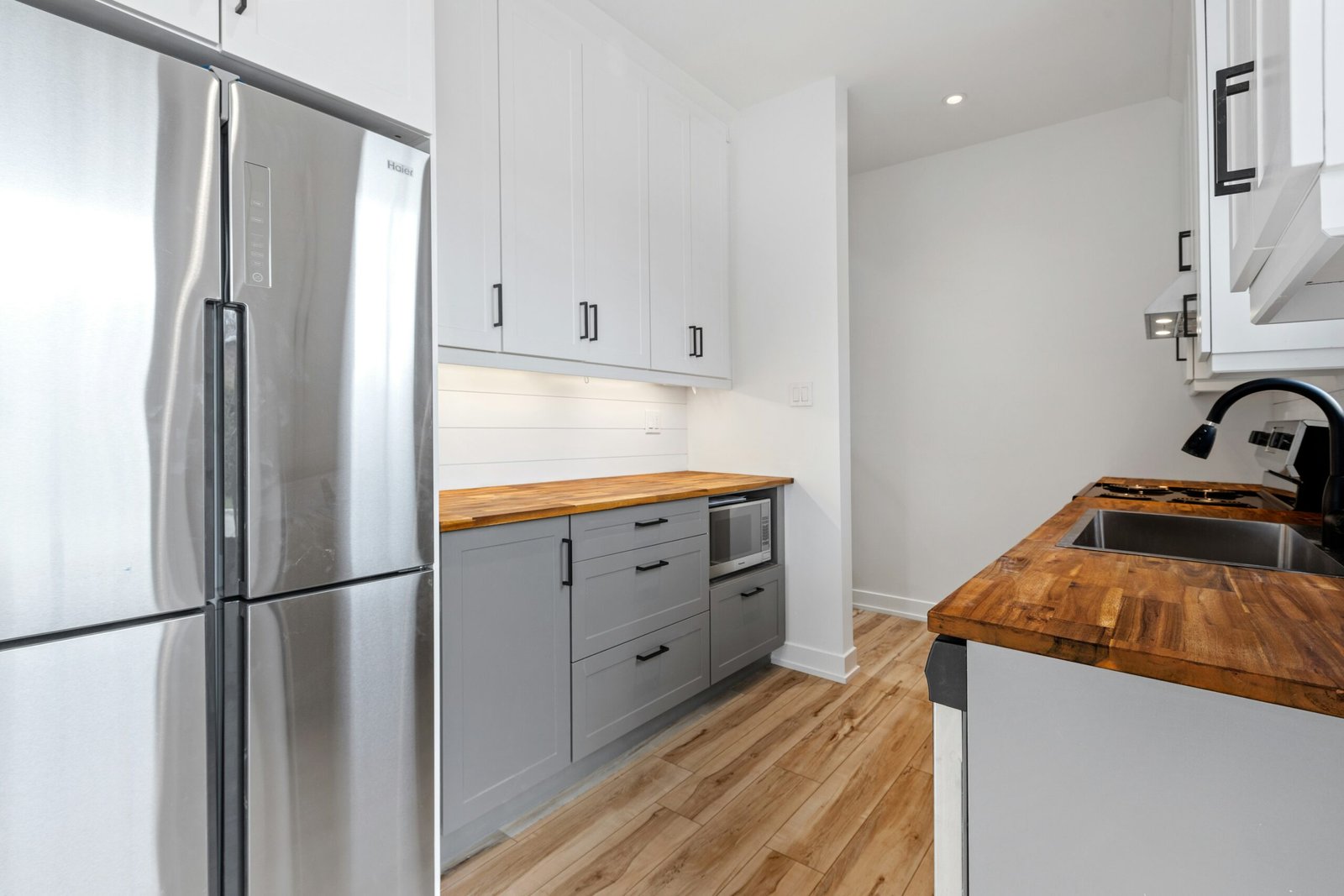If your refrigerator is outdated or inefficient, it might be doing more harm than good—raising energy bills, wasting space, and disrupting your kitchen’s flow. Choosing the right fridge isn’t just about looks. It’s about finding a model that fits your kitchen, matches your lifestyle, and saves energy.
This guide walks you through everything you need to know, from space planning to choosing energy-saving features. Whether you’re outfitting a new kitchen or replacing an old model, you’ll leave with clear, useful steps to make a smart, confident purchase.
1. Choose the Right Refrigerator Style for Your Space and Lifestyle
Every kitchen has different space constraints, and every household has unique storage needs. Here’s a breakdown of popular refrigerator types and who they’re best for:
Top-Freezer Refrigerators
- Best for: Small kitchens or apartments
- Why it works: Compact, affordable, and reliable
- Downside: Less freezer accessibility
Bottom-Freezer Refrigerators
- Best for: Families that use fresh foods more often
- Why it works: The fridge is at eye level, making it easy to access everyday items
- Downside: Freezer drawer may be less organized
Side-by-Side Refrigerators
- Best for: Busy households that need better organization
- Why it works: Narrow doors save space, separate fridge/freezer compartments keep items neat
- Downside: Narrow shelves may limit storage for wide items
French Door Refrigerators
- Best for: Larger families or gourmet kitchens
- Why it works: Spacious interiors, flexible storage, and stylish design
- Bonus: Often includes high-tech features like door-in-door access
Smart Refrigerators
- Best for: Tech-savvy homeowners
- Why it works: Touchscreen controls, remote monitoring, grocery management apps, and more
- Consider: These models are usually more expensive, but offer future-ready convenience
2. Measure Your Space (Correctly!)
Before you fall in love with a model, make sure it fits:
- Width: Most fridges range from 30 to 36 inches wide. Measure your space carefully.
- Height: Account for cabinet clearance and top ventilation.
- Depth: Include room for power cords, water lines, and proper airflow (usually add ½ inch).
- Door swing: Make sure doors can open fully without hitting cabinets or walls.
Tip: Bring your measurements when shopping—and double-check the specs online.
3. Prioritize Energy Efficiency to Save Money Long-Term
Modern refrigerators use far less energy than older models. Look for the following features to reduce your electric bill:
Key Energy-Saving Features
| Feature | Why It Matters |
| LED Lighting | Uses less electricity and improves interior visibility |
| Dual Compressors | Separates cooling for fridge and freezer, maintaining optimal temps |
| Inverter Compressors | Adjusts cooling power based on demand, reducing energy use and noise |
| ENERGY STAR Certified | Guarantees high energy performance backed by EPA standards |
LED Lighting Example:
A standard bulb draws more power and generates heat. LED systems provide better light with less energy, keeping food visible and your utility bills lower.
4. Look for Smart and Functional Extras
Today’s refrigerators offer more than cold storage. Consider these modern features that improve daily use:
- Door-in-Door Design: Grab frequent items without letting cold air escape
- Smart Connectivity: Control temperature, monitor usage, and get alerts via your smartphone
- Filtered Water & Ice Dispensers: Built-in filters improve taste and convenience
- Flexible Shelving & Storage Bins: Reconfigure shelves to fit your grocery habits
5. Best Times to Buy a Refrigerator
Timing your purchase can help you save:
- Holiday Sales: Look for deals during Memorial Day, Labor Day, Black Friday, and Presidents’ Day
- Model Changeovers: New models are released in September and October, making it a good time to snag last year’s inventory at a discount
Conclusion: Your Refrigerator Should Work Smarter, Not Harder
Choosing a refrigerator is more than a one-size-fits-all decision. It requires thinking through your kitchen layout, family size, food habits, and energy goals. By matching the right type to your lifestyle—and looking for smart, efficient features—you’ll end up with an appliance that simplifies your life and lowers long-term costs.
Frequently Asked Questions
Q: What size fridge do I need for my family?
A: Plan on 4–6 cubic feet per adult. For a four-person family, aim for at least 18–20 cubic feet.
Q: Which refrigerator style offers the most space?
A: French door models have the largest interior capacity and flexible storage options.
Q: How much clearance do I need around the fridge?
A: Allow at least 0.5 inches on each side and behind for ventilation. Don’t forget to check door swing clearance.
Q: What’s the difference between French door and side-by-side fridges?
A: French door models have two top doors and a bottom freezer drawer. Side-by-side splits vertically between fridge and freezer.
Q: What smart features are worth it?
A: Look for temperature alerts, grocery tracking, remote control via app, and self-diagnostics for troubleshooting.
Q: Are ENERGY STAR models really worth it?
A: Yes. They use up to 15% less energy, saving you money every month and reducing your environmental impact.

